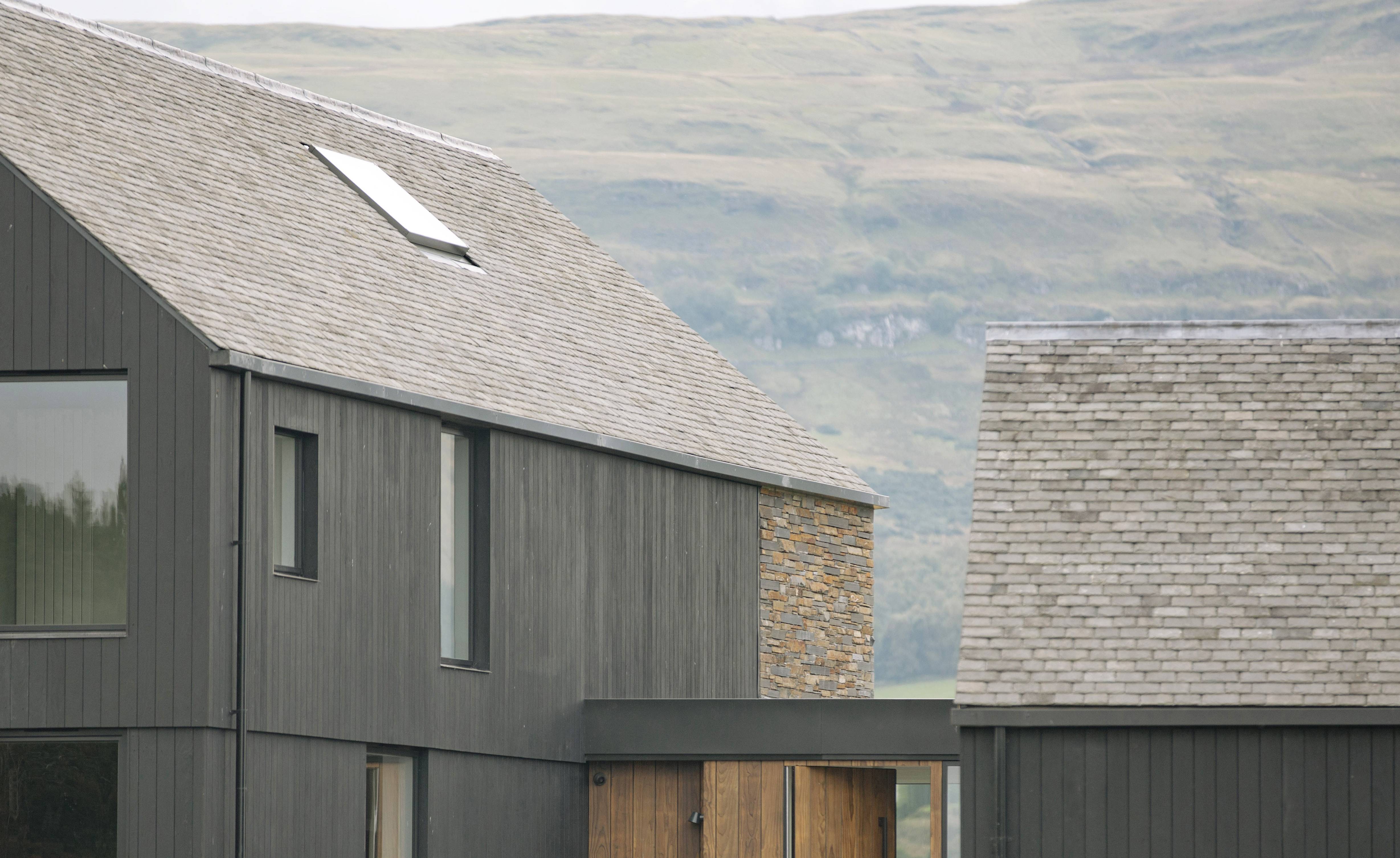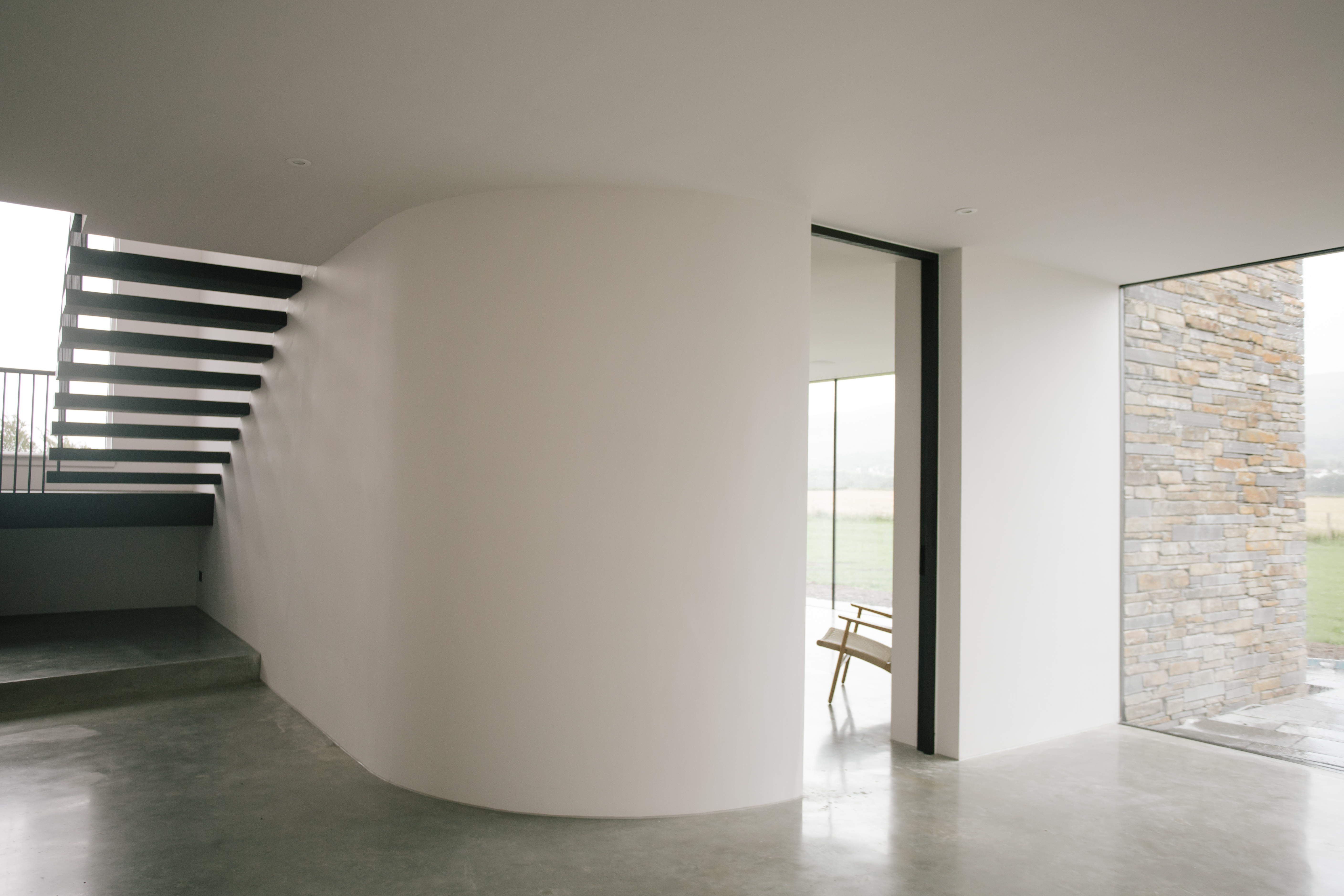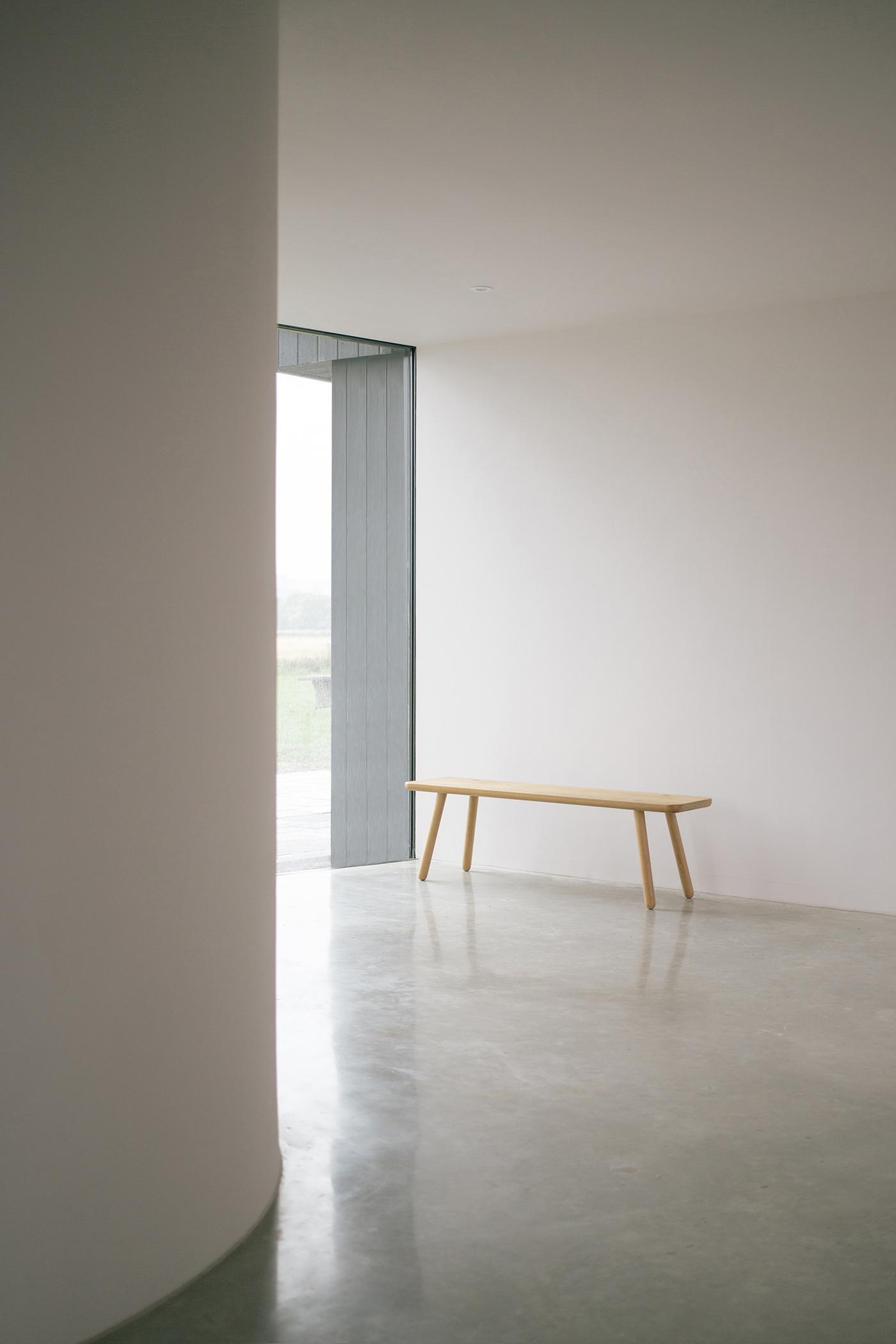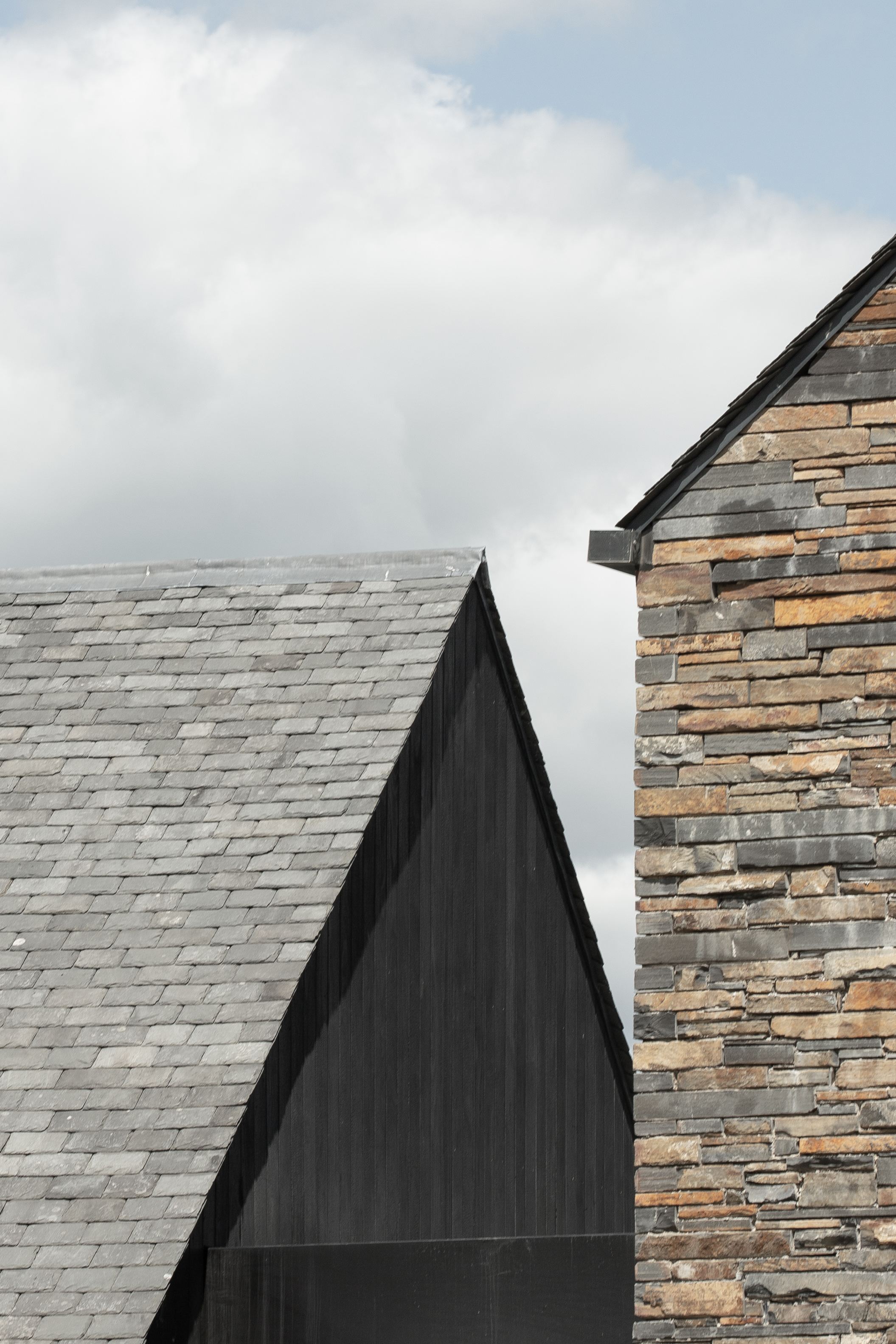Scottish farmhouse designed to stand the test of time
Minimalist Scottish farmhouse by Glasgow-based Baillie Baillie Architects draws on the area’s typical agricultural settlements
Alexander James-Aylin - Photography

The Kepdarroch Farmhouse is that rarest of contemporary buildings, a new-build house on a working farm. Glasgow-based Baillie Baillie Architects designed the minimalist house for a young family on a plot surrounded by open fields. Colin and Megan Baillie’s studio took inspiration from typical agricultural settlements, groupings of functional buildings that evolve over time. Arranged around an informal courtyard, the exterior of this Scottish farmhouse uses materials that weather naturally, such as stone, wood, and slate, while the sleek interiors feature white walls and polished concrete floors. Internal volumes are pushed to the edges of the house's building envelope, with a generous pitched roof to the main living area.
Minimalist Scottish farmhouse built for longevity

The house was designed to grow and evolve over time with the clients’ young family. ‘They wanted a house that would be a joy to spend time in and could accommodate the changing needs of a growing family,’ says Colin Baillie.
The site, on the family farm, provided an opportunity to do things differently from a run-of-the-mill new-build home, starting with the materials. Caithness stone, charred timber, and reclaimed slate are the primary exterior materials, inspired by traditional drystone walls on the farm, and designed to slowly become part of the surrounding landscape.

The silhouette, formed from three distinctive but differently sized pitched roof volumes, is enhanced by prominent chimneys and broken up by the rhythm of the large areas of glass and the dark charred wood.
The courtyard arrangement provides shelter from the weather, while the components are arranged to make the most of the views and the changing light; south- and west-facing living spaces soak up the sunshine, while the concrete floor slabs are also heated by a ground source heat pump.

From a distance, this Scottish farmhouse has no jarring sense of newness. This sense of ‘familiarity and timelessness’ is all part of the architects’ emphasis on sustainability; the house is intended to last for at least a century, thanks to robust construction, flexible layouts, and careful detailing. Luxurious touches like the freestanding bathtub and sparse but rich material detailing all contribute to a feeling of endurance and solidity.
‘We see longevity as one important tenet of environmentally responsible architecture,’ says Baillie.
Receive our daily digest of inspiration, escapism and design stories from around the world direct to your inbox.




INFORMATION
Jonathan Bell has written for Wallpaper* magazine since 1999, covering everything from architecture and transport design to books, tech and graphic design. He is now the magazine’s Transport and Technology Editor. Jonathan has written and edited 15 books, including Concept Car Design, 21st Century House, and The New Modern House. He is also the host of Wallpaper’s first podcast.
-
 Year in review: the shape of mobility to come in our list of the top 10 concept cars of 2025
Year in review: the shape of mobility to come in our list of the top 10 concept cars of 2025Concept cars remain hugely popular ways to stoke interest in innovation and future forms. Here are our ten best conceptual visions from 2025
-
 These Guadalajara architects mix modernism with traditional local materials and craft
These Guadalajara architects mix modernism with traditional local materials and craftGuadalajara architects Laura Barba and Luis Aurelio of Barbapiña Arquitectos design drawing on the past to imagine the future
-
 Robert Therrien's largest-ever museum show in Los Angeles is enduringly appealing
Robert Therrien's largest-ever museum show in Los Angeles is enduringly appealing'This is a Story' at The Broad unites 120 of Robert Therrien's sculptures, paintings and works on paper
-
 Arbour House is a north London home that lies low but punches high
Arbour House is a north London home that lies low but punches highArbour House by Andrei Saltykov is a low-lying Crouch End home with a striking roof structure that sets it apart
-
 A former agricultural building is transformed into a minimal rural home by Bindloss Dawes
A former agricultural building is transformed into a minimal rural home by Bindloss DawesZero-carbon design meets adaptive re-use in the Tractor Shed, a stripped-back house in a country village by Somerset architects Bindloss Dawes
-
 RIBA House of the Year 2025 is a ‘rare mixture of sensitivity and boldness’
RIBA House of the Year 2025 is a ‘rare mixture of sensitivity and boldness’Topping the list of seven shortlisted homes, Izat Arundell’s Hebridean self-build – named Caochan na Creige – is announced as the RIBA House of the Year 2025
-
 In addition to brutalist buildings, Alison Smithson designed some of the most creative Christmas cards we've seen
In addition to brutalist buildings, Alison Smithson designed some of the most creative Christmas cards we've seenThe architect’s collection of season’s greetings is on show at the Roca London Gallery, just in time for the holidays
-
 In South Wales, a remote coastal farmhouse flaunts its modern revamp, primed for hosting
In South Wales, a remote coastal farmhouse flaunts its modern revamp, primed for hostingA farmhouse perched on the Gower Peninsula, Delfyd Farm reveals its ground-floor refresh by architecture studio Rural Office, which created a cosy home with breathtaking views
-
 A revived public space in Aberdeen is named Scotland’s building of the year
A revived public space in Aberdeen is named Scotland’s building of the yearAberdeen's Union Terrace Gardens by Stallan-Brand Architecture + Design and LDA Design wins the 2025 Andrew Doolan Best Building in Scotland Award
-
 A refreshed 1950s apartment in East London allows for moments of discovery
A refreshed 1950s apartment in East London allows for moments of discoveryWith this 1950s apartment redesign, London-based architects Studio Naama wanted to create a residence which reflects the fun and individual nature of the clients
-
 In this Cotswolds home, drama meets minimalism
In this Cotswolds home, drama meets minimalismCotswolds home Hiaven house, with interiors designed by McLaren Excell, is a perfect blend of contemporary chic and calm, countryside drama